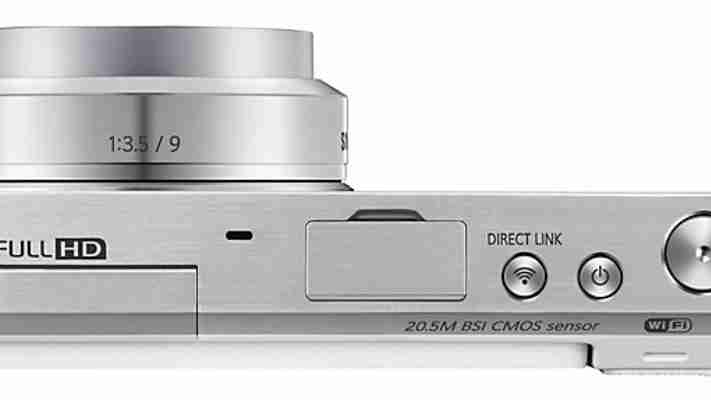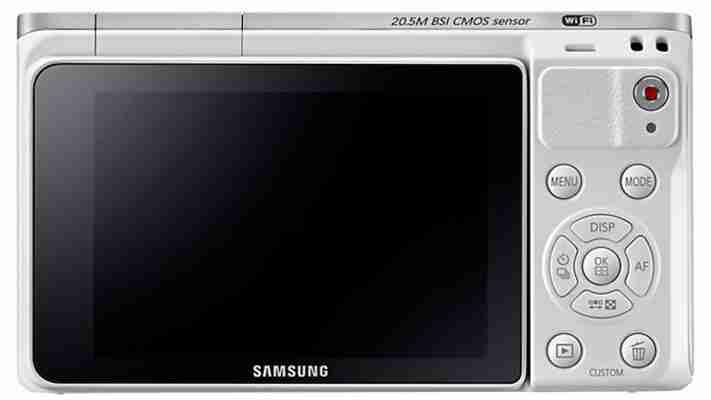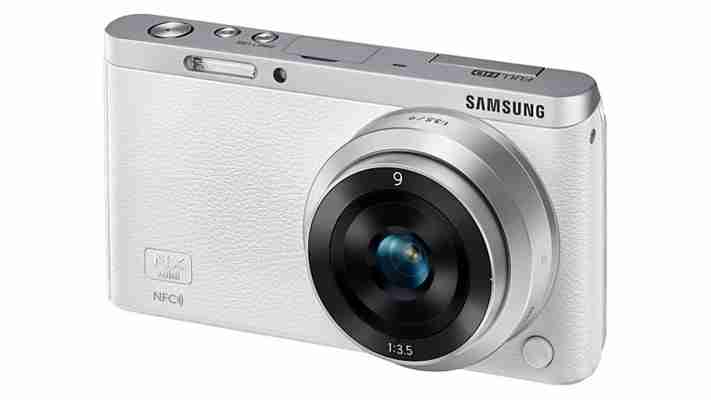We'll always applaud a camera manufacturer that pushes the boundaries, even if we don't necessarily admire the camera itself. On that basis, Samsung is due for some riotous applause with the arrival of the NX Mini. It's the world's slimmest interchangeable-lens camera, measuring just 23mm in depth – or 35mm with its tiny kit lens attached. Weighing 229g for the camera and lens, it's no bigger than a conventional compact camera, and less than half the weight of Samsung's existing NX compact system cameras.
Samsung has achieved this by introducing a new lens mount. The Samsung NX-M mount is based around a 1in sensor – the same size that's used in Nikon 1 cameras and the Sony RX100 III . That's about a third the surface area of the APS-C sensors used in previous Samsung NX cameras, but four times larger than the 1/2.3in sensors in most compact cameras.

The Sony RX100 III showed how well this sensor size can perform, especially when it's behind a wide-aperture zoom lens. The NX Mini's 9mm kit lens can't zoom, though, and its f/3.5 isn't particularly bright. In fact, it captures a quarter as much light as the RX100 M3's f/1.8 maximum aperture. There's no optical stabilisation or filter thread and not even a lens cap – just a flat piece of glass on the front that's easy enough to wipe clean. It seems fair to say that this lens is designed for compactness above all else. Its 24mm (35mm-equivalent) focal length gives a wide-angle view that wouldn't be our first choice if we were only to have one lens on a camera.
Two other lenses have been announced, both of which are a little bigger and heavier but include optical stabilisation and more useful optical specifications. One has a 9-27mm focal length range, which equates to 24-73mm in 35mm-equivalent values. Its f/3.5-5.6 aperture is nothing special but its zoom and stabilisation make it more useful than the 9mm kit lens. We wonder how much the 9mm lens would get used by people who owned both. The 9-27mm lens is expected to cost £200 inc VAT.
The other NX-M lens is a 17mm f/1.8, which is equivalent to 46mm f/5 on a full-frame camera. That's good going for a camera and lens with a combined weight of 251g and just 50mm thick. With a suggested price of £160 inc VAT, the 17mm looks set to be the star of the line-up.

The camera itself is a stylish bit of kit, with an aluminium top plate and textured plastic in a choice of white, black, brown, pink or lime green finishes. Samsung has found room for an integrated flash and a battery with an impressive 650-shot capacity. It takes Micro SDXC cards, but with fast 16GB cards costing less than £10, it's not much of a setback for those with a big stock of SDHC cards.
The slim design leaves little room for controls. Rather than a mode dial, there's just a button that reveals the available modes on the screen. Thankfully, the 3in touchscreen keeps things moving along nicely. Tapping the on-screen Fn button reveals various key functions across the screen. Exposure-related settings can be adjusted simply by swiping the control. Tapping others presents various options to choose from. The touchscreen also makes it quick to move the autofocus point. The screen can fold up and over for self-portraits, whereupon a three-second self-timer function automatically kicks in.
Wi-Fi is built in, and with the help of NFC, we were up and running with our Nexus 4 phone in a matter of seconds. The remote viewfinder mode let us capture photos and videos from the app, although the live preview was disabled while recording. The app also includes full control over exposure settings, white balance, autofocus point and photo and video quality settings. Browsing and transfers of photos and videos is well implemented, with browsing in the connected device and automatic resizing to 2 megapixels. There's also an option to send photos as soon as they're captured, these are at the full 20-megapixel resolution and took about 10 seconds to transfer, during which time the camera was inoperable.
With Wi-Fi disabled, performance was much quicker. It took 0.8 seconds between shots in normal use, or 1.8 seconds in RAW mode. Autofocus was fast and reliable in most conditions, although it struggled in very low light. Continuous mode ran at 6fps, but slowed dramatically after 11 JEPGs or 4 RAW shots.

